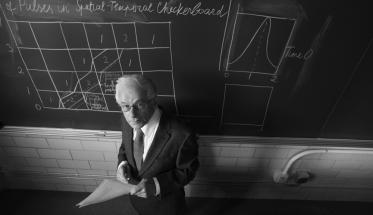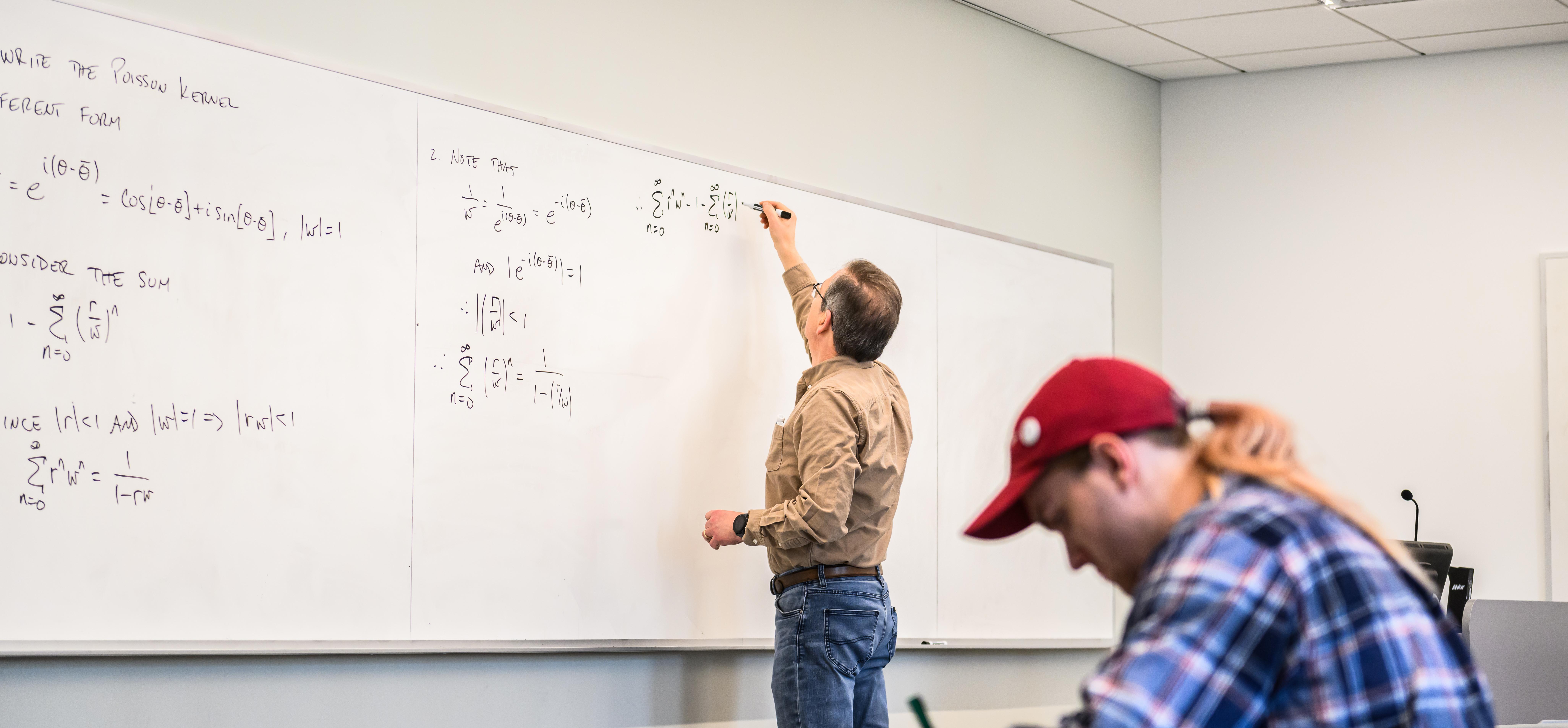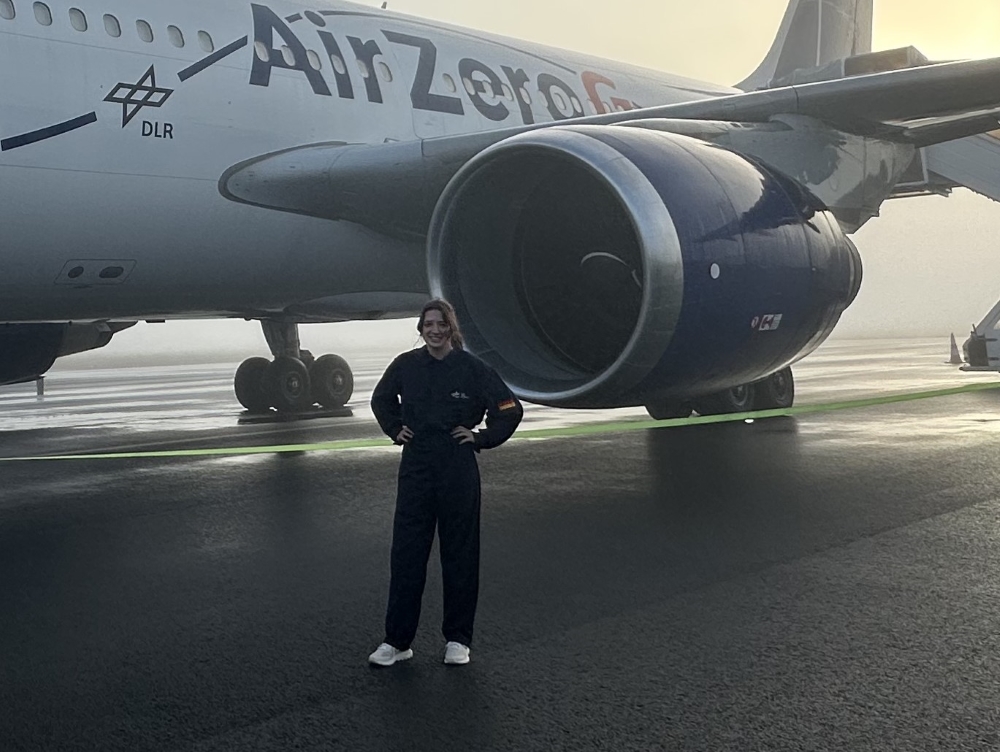On October 4, 1957, an R-7 rocket rose from a launch pad in Central Asia. Less than 10 minutes later it released its cargo: a metal sphere the size of a beach ball, within which was a radio transmitter that announced the dawn of the Space Age with a continuous broadcast of high-pitched beeps.
Some 2,000 miles away, at the westernmost edge of the USSR, Konstantin Lurie was pursuing a BS in radio-physics at the renowned Leningrad Polytechnic Institute. While he could not have known it then, the launch of Sputnik 1 would become both an inspiration and a metaphor for the two groundbreaking eras in his long career in applied mathematics.
Like all machines built for space travel, Sputnik and the R-7 were the products of optimization—of refining, honing, and planning until a goal can be achieved with high precision and little waste. They were made from alloys and composites carefully crafted for optimal function. And as it slipped through the atmosphere, exchanging energy, mass, and momentum with the environment around it, the R-7 was a model for a new and remarkably versatile category of materials, ones that change in time as well as space.
Though Sputnik plunged to Earth three months after it reached orbit, it had a lasting influence on the trajectory of space exploration. Similarly, nearly six decades after he published his first scientific paper, Lurie not only continues to open new horizons in his field, but to influence and inspire new generations of scholars who are building on the well-crafted foundation he assembled. 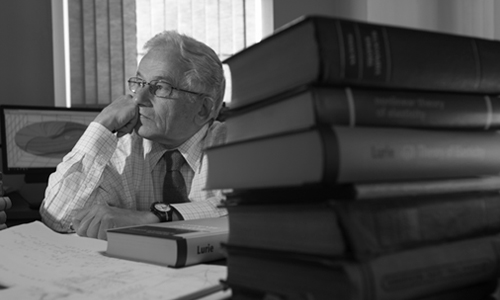
Far and Wide
As he recalls the origins of his career, he credits two main influences. The first was his father, Anatolii Lurie, an eminent scholar in the field of mechanics and control. Growing up in Leningrad (today’s St. Petersburg), the young Konstantin watched his father toil over 10 influential books. Today, he keeps these volumes (almost all of which have been translated into English) close by in his office at WPI.
Holding up one, he says, “I feel that at his time, it was at the forefront of current research on elasticity, and I am really proud of that.” Of a multi-volume work on mechanics, he says, “It’s a classical field, but he made it possible to give a composition that is very original and it is surprising how he managed it. So I was very fortunate to have received my upbringing from him, but he was not my only mentor.”
After graduating from Leningrad Polytechnic, Lurie received a PhD at the A. F. Ioffe Physical-Technical Institute of the USSR Academy of Sciences, also in Leningrad. He then joined the institute’s mathematics department and became part of a group of applied mathematicians led by Georgii Grinberg, whose scholarship was known worldwide. He says Grinberg believed applied mathematicians should look to the real world for inspiration.
“The natural world is a great source of ideas for applied mathematics,” Lurie says, “and that is the main lesson I learned from Professor Grinberg.”
Lurie worked brie y on diffraction theory, a general focus for the Ioffe group, but soon began looking, as he says, “for my personal way to go.” With Sputnik having brought optimization to the forefront, he wondered whether that idea might offer an interesting way forward. “I realized that optimization goes beyond flight—in other words, when and where to correct your orbit or your trajectory,” he says. “Optimization goes very far and very wide. It goes, for example, to building things: houses, air- planes, automobiles, and so on.”
He decided that optimization, when applied to design and construction, was a fertile field. “Over the millennia, optimization has been an art and not a science,” he says. “It was at the level of intuition accumulated through centuries of experience. Architects and designers had a deep understanding of these principles, but it had never been made a part of mathematics.”
For Lurie, optimization meant placing only the materials that are absolutely necessary exactly where they are necessary to achieve one’s goals. And with the materials, themselves, it meant combining two or more substances into composites so that the layout of the components, at the micro scale, offers the optimal performance at every point in the construction. He called this optimal material design.
What might seem, intuitively, like an optimal layout often isn’t, Lurie says. He provides an example in the form of a thought experiment. Assume, he says, that you have a rectangular space into which heat flows from the top. The sides are made from perfect insulators, so all the heat travels to the bottom, where it exits. Now assume you want to focus that heat on just one section of the bottom boundary. To do so, you can add two kinds of material to the interior: a good heat conductor and a poor heat conductor (though not a perfect insulator). It might seem logical to add triangular sections of the poor conductor at the sides to funnel the heat toward the target, and to then fill the rest of the interior with the good conductor.
But that is not the optimal solution, he says. Instead, you create a structure that looks more like a W. On the outside of the W you place the poor conductor. You fill the middle, upward-pointing triangle with the good conductor. In the other triangles, you install a laminate made of alternating layers of good and bad conductor, slanting inward toward the middle triangle. As heat crosses the borders between the layers, it changes direction, becoming more and more focused on the target.
What is now considered a classic implementation of the theory of dynamic materials emerged from a collaboration between Lurie and Suzanne Weekes, professor of mathematical sciences.
“There will be as many jumps as you have layers,” he notes, “and you need infinitely many layers. In other words, you need to alternate the materials on the microscale. And this is a key idea. This idea came to me at the early stage of my work with optimization. It came about as a result of physical reasoning, and the mathematics was a consequence of that. I realized that to work effectively, to solve a problem both analytically and numerically, you first needed to formulate that problem properly.”
Starting in the 1960s, Lurie and Andrei Cherkaev, a former student (Lurie calls him “one of the most inventive, original, and powerful minds I ever met”) who went on to become a distinguished professor at the University of Utah, built the mathematical underpinnings for this new subdivision of applied mathematics. Among their discoveries was that to determine the optimal layout of materials, one may consider all possible layouts— a range of possibilities they called the G-closure set. From that set, the ideal combination could be mathematically determined.
Lurie and Cherkaev showed that creating these sets is mathematically possible, though technically demanding. They established the sets for a number of important cases, and the growing body of optimal materials scholars around the globe completed others. But Lurie says just as important was the realization that it is not always necessary to know all possible combinations; some design needs can be met with a simpler approach. He likens the G-closure set to a car mechanic’s complete toolbox. “To change a tire, you need just a few wrenches, not the whole toolbox.”
By extending the formulation of the G-closure, Lurie was able to give designers simpler tools they could use to apply optimal design to particular, narrow problems. These tools helped bring optimal design into the real world, where it has been used by many industries to create materials for applications ranging from automobile bumpers to jet engine turbine blades.
Time and Space
In the late 1980s, Lurie prepared to flee his home city for the second time. As a child during World War II, he and his family evacuated before the start of the German siege. Now, the ethnic nationalism and anti-Semitism that had simmered below the surface in the USSR was becoming more overt as the empire began to fall apart. In 1988, he decided to move his family to the United States. 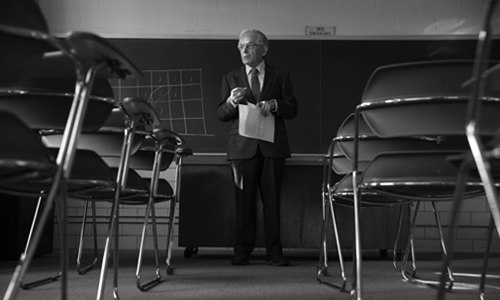
His international reputation won him a temporary post as Paul G. Goebel Visiting Professor at the University of Michigan. A year later, Samuel Rankin, recently retired associate executive director of the American Mathematical Society, who was then head of the Mathematical Sciences Department, invited him to join the WPI faculty.
The move coincided with the start of a shift in Lurie’s focus. “My work until then had concerned itself with static objects,” he says. “Static objects are dead materials. They work in space alone; they are time invariable. But the world around us is filled with objects that demonstrate variability in their material properties not only in space, but also in time.”
Consider the R-7 rocket lofting Sputnik into orbit. As it consumes its fuel, heat and combustion products leave the rocket in a jet of exhaust while the rocket loses weight and gains momentum. Friction with the atmosphere warms the rocket’s exterior, while the fuel tanks, as they empty, lose some of their stiffness. “So now we deal with a material whose properties are variable in space and time.”
Lurie called these objects dynamic materials. They are characterized by exchanges, or fluxes, with the environment. They exchange mass, momentum, and energy, and their properties change in the process. Described in physical terms, dynamic materials are thermodynamically open systems. The largest group of dynamic materials are living organisms, including the human body. “Your body is a framework, and this framework is acted upon by fluxes,” he says. “This union, of framework and fluxes, is what I call a dynamic material.”
Looked at this way, the notion of a dynamic material encompasses a broad range of systems—physical and conceptual. For example, Lurie says, it can be applied to traffic on a roadway. “That is not a physical system,” he says, “but it is a spatiotemporal entity—a dynamic material.
“This is a universally significant idea. It embraces almost everything. And it is consistent with Einstein’s theory, which says that space and time constitute a union,” he says. “It is, conceptually, a relativistic concept.
“I arrived at this understanding from the gate of optimization,” he adds, “from an attempt to work with optimal systems, the properties of which are dependent on space and time. To this end, the necessity appeared to work out the mathematical techniques similar to the G-closure issues. But it turned out that the mathematics of spatiotemporal optimization is very much different.”
Lurie began to define those unique mathematical principles in a pioneering 1997 paper in the International Journal of Solids and Structures. It was in that work that he first described some of the remarkable abilities that might arise when materials can be controlled in such a way that their proper- ties vary simultaneously in time and space. They include structural materials that can screen out disturbances (imagine a building that can shield its inhabitance from the seismic waves of an earthquake or a vehicle that can protect its occupants from the shock waves aof a roadside bomb) and negative index materials that bend light around themselves, rendering objects invisible. (A decade later, Lurie published the definitive book on the field, An Introduction to the Mathematical Theory of Dynamic Materials (Springer, 1997). The second edition was released in 2017 with 50 percent more content.)
What is now considered a classic implementation of the theory of dynamic materials emerged from a collaboration between Lurie and Suzanne Weekes, professor of mathematical sciences. In a 2006 paper in the Journal of Mathematical Analysis and Applications, they explored a way to change the properties of an electromagnetic wave as it travels through a dynamic dielectric material. “To change its properties in time, you need to commit work against the propagating wave,” Lurie says. “And to commit work, you need an external agent. You need the environment.”
“The natural world is a great source of ideas for applied mathematics,” Lurie says.
The paper explored a new way of creating a transmission line, which electrical engineers de ne as a linear array of cells, all of which have a specific inductance and capacitance. Lurie and Weekes imagined, instead, a two-dimensional array with two kinds of cells, each with its own inductance and capacitance. They called these combinations “Property 1” and “Property 2.” The cells would alternate in both dimensions, spatial and temporal, like the white and black squares of a checkerboard.
To this end, they imagined that each cell could have a switch that would instantly change its proper- ties, so all cells with Property 1 would now have Property 2, and vice versa. At regular intervals, the switches would be activated. Properly designed, this double-periodic array of materials, through the temporal switching, would act on an electromagnetic wave traveling through the array, turning the work supplied by an external agent against the wave and causing it to accumulate energy. The effect is very much like the energy pumping that happens inside a laser, but “it operates on an entirely different principle,” Lurie says. “The checkerboard is, first and foremost, about focusing. And it is a kind of universal principle, in our opinion. We are seeing other applications of this principle, and we expect to find many others.” (As one example, a paper presented at the 2017 Institute for Mathematics and its Applications in Minneapolis, where he was the keynote speaker, described a real- world application by mathematicians in Paris involving shallow water waves.)
“So it is not hard to see what is going to happen if we persistently apply these concepts in various directions. Optimization in space and time is an extremely promising trend. It promises a lot, in applications like electromagnetics, power generation, robotics, and more.” Lurie, himself, is interested in using the checkerboard concept to gain a better understanding of some of the behaviors of living systems that are not fully under- stood—for example how worms and snakes propel themselves. Such knowledge could help create more effective snake-like robots.
Lurie becomes energized as he considers the prospect of (as his mentor Grinberg advised so long ago) turning to the natural world for new examples of dynamic materials. Now in his early 80s, he shows no sign of slowing down. “Because the deeper you go, the more interesting things become,” he says. “You never know where this interest might exhaust. You never know that.”
Indeed, it might be said that among all the materials that surround and fascinate him, Lurie remains the most dynamic of all.
First published in WPI Journal, Winter 2017 edition
